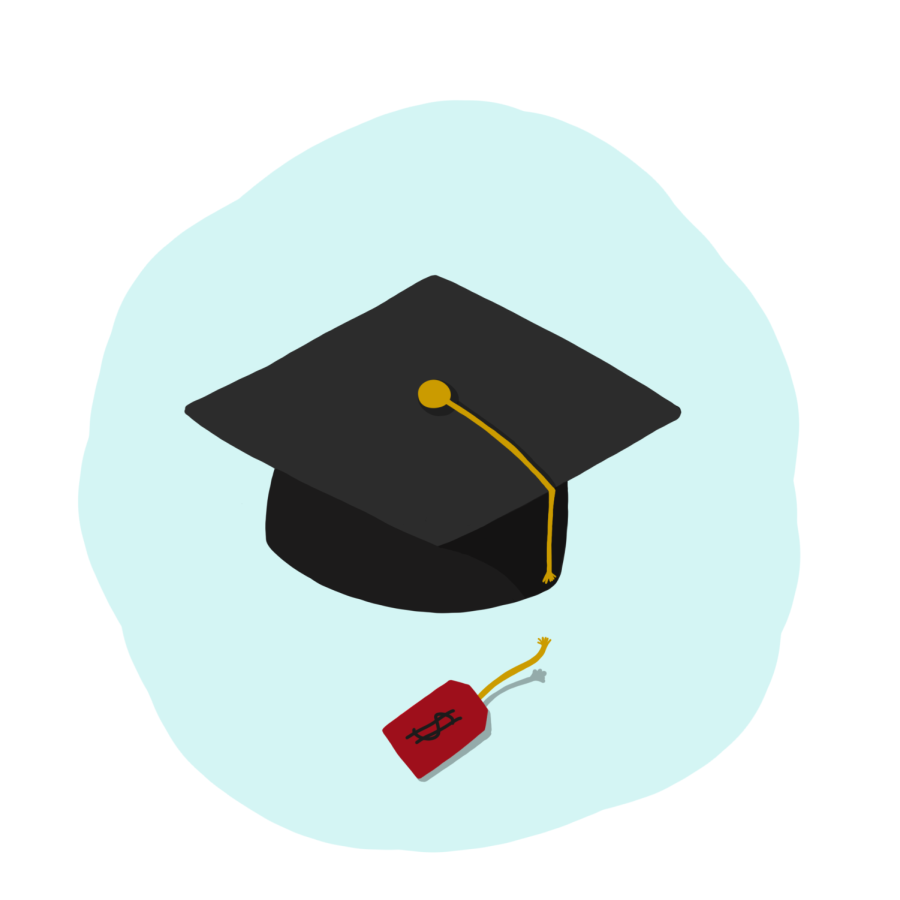UTSA expands Bold Promise program to $70,000 income threshold
‘The Bold Promise program pretty much mirrors our population’
October 26, 2021
UTSA, for the Fall 2022 semester, plans to expand its Bold Promise program — a policy that offers free tuition and fees to eligible students from middle to low income households — to include students with a family income of $70,000.
The program’s previous income threshold was $50,500, but currently the new criteria increases the income marker to $70,000 and maintains the requirement that students must be Texas high school graduates ranked in the top 25% of their class.
Lynn Barnes, senior vice provost for strategic enrollment, explained the expansion was meant to serve more students and provide more opportunities to have guaranteed free tuition and fees. In addition, Barnes explained that students not ranked in the top 25% of their class are not excluded from financial aid, but are not necessarily guaranteed to receive financial aid via the Bold Promise program.
“Keep in mind that this criteria is just to guarantee the funding at no cost to the students,” Barnes said. “However, the population of students [who are low income and not ranked in the top 25%] are fully eligible for financial aid and in many cases have financial aid that is probably close to that, sometimes even more, depending on the student. Let’s be clear: this program does not exclude anyone from receiving financial aid and assistance from UTSA, it is just used as a marker where we guarantee tuition for that top 25% … In no way is anyone excluded from receiving financial aid.”
Since its infancy in December 2019, the “Bold Promise” program has assisted over 1,700 students — two freshman classes — by guaranteeing full coverage of tuition and fees. Barnes explained the results that the university has witnessed since the program’s inception.
“The positive results from the first cohort of students, who enrolled in Fall 2020, performed academically better than their peers, both on grade point average and also the number of hours they took,” Barnes said.
In fact, full-time Bold Promise students received more credit hours than their peers, an average of 24.6 credit hours, compared to 23.6 from non-Bold Promise recipients. Beneficiaries also received higher GPAs, 2.84, versus their peers who on average earned a 2.72 GPA. Barnes attributed the slight margin to the release of financial burdens.
“We wanted students to focus on their studies and to not worry about finances. I think that has helped students focus on making great grades,” Barnes said. “We do want to be mindful that sometimes students have to borrow student loans to make ends meet and cover their educational expenses … So we are hoping that with expanding this program and providing more institutional resources, we can help lessen the need to take out student loans.”
Barnes also explained what the program would mean for students who are thinking of applying at UTSA and for those who are currently benefiting from the program.
“Clearly, this will help more students as they are thinking of applying to UTSA to help understand programs that can help cover tuition and fees,” Barnes said. “We see this expanding throughout higher education in community college and other universities who are trying to offer a free tuition program: this is UTSA’s bold effort to do that. There’s a lot at play, but the bottom line is increasing opportunities for students, both incoming and current students.”
As Barnes mentioned, several universities have expanded similar programs that offer free tuition for eligible students. Among them, the University of Texas Rio Grande Valley announced that, starting in Fall 2022, the university will cover full tuition and fees for students whose family income is $100,000 or less. The move by the university solidifies itself as one of the highest income thresholds for any public state university.
Although a sister university to UT Rio Grande Valley, Barnes explained why UTSA does not currently have the same threshold as its counterpart.
“Each university student body is different in terms of financial needs and academic profile; every university stands on its own as far as its student body,” Barnes said. “We are a sister institution in the same university system, UT Rio Grande Valley is serving a different population of students than we are. It’s fantastic that they were able to increase that threshold: they do in their student body have a little more financial need, as a whole, than ours does so as a result they are able to offer more federal and state grants to students, and have more available than a university like UTSA.”
Despite the differences in financial demands from students, Barnes clarified that the program would continue to be reevaluated: should the university have the resources, the program’s threshold could be expanded.
“We are going to look at this every year and put as many resources out there as we can for our students so if that means we can expand the criteria and expand the program, we will absolutely do that,” Barnes said. “It is something we will keep our eye on and we also want to hear feedback from students. If I was a student receiving free tuition, I would want to know what is beneficial as a student and also advocate for more resources to expand to other students, so we want to have our students engage with us as we expand this.”
Barnes also explained the demographics of students who utilize the program reflect the university’s initiative to serve Bexar County as well as the current population of UTSA.
“[The Bold Promise Program] pretty much mirrors our population of students, as a whole,” Barnes said. “I will say that part of the goal was to help Bexar County students and focus on our community, and I think that is working really well, so we have a large percentage that are from Bexar County.”
In addition, the senior vice provost also pointed to the relative diversity of the Bold Promise recipients.
“Since there is an income-based threshold, there are a lot of low to middle-income students that need financial help so this is providing an avenue for them to be successful,” Barnes said. “We have a great mixture of first-generation, non-first generation and a variety of income categories are covered. We know there are probably students who want to take advantage of the program who are thinking of applying to UTSA, so we are actively marketing to them.”
Students who qualify for Bold Promise and apply by the January 15 financial aid priority deadline will have 100% of their tuition and fees covered. Aside from filling out the FAFSA, no separate application is needed to qualify for the program. Barnes emphasized the importance of meeting deadlines as well as the prerogative of students to maintain their end of the “bold” promise.
“It is absolutely critical that students fill out the FAFSA and meet the deadline. If a current recipient of Bold Promise fails to fill out the deadline for next year, they will no longer be eligible for the program,” Barnes said. “It is important that every single student who fills out the FAFSA fills it out as soon as possible to maximize resources. For students who are already here who are Bold Promise, they really need to keep up the grade requirement and fill out the FAFSA application because we want students to keep that promise. If they do that, they are going to be great and everything will be covered. I want students to apply for scholarships … because we want students to have as much financial aid as possible so filling out our scholarship application each year is great for students to maximize what is available to them. We want to be in a position to help as much as possible, but that also requires students to help by meeting those deadlines.”
Barnes concluded by reinforcing the university’s wish to help students in whatever capacity possible, allowing students to reach their highest potential while alleviating financial burden.
“This is a great story for our community and for students who are going to college,” Barnes said. “This is about UTSA, but we want students to go to college, period. So taking advantage of these types of programs is great for students to lift that financial burden and focus on what is most important: getting their education and moving on with their career. This has been positive for students so we are glad they are performing well … to see this program having that type of progress is really positive.”













